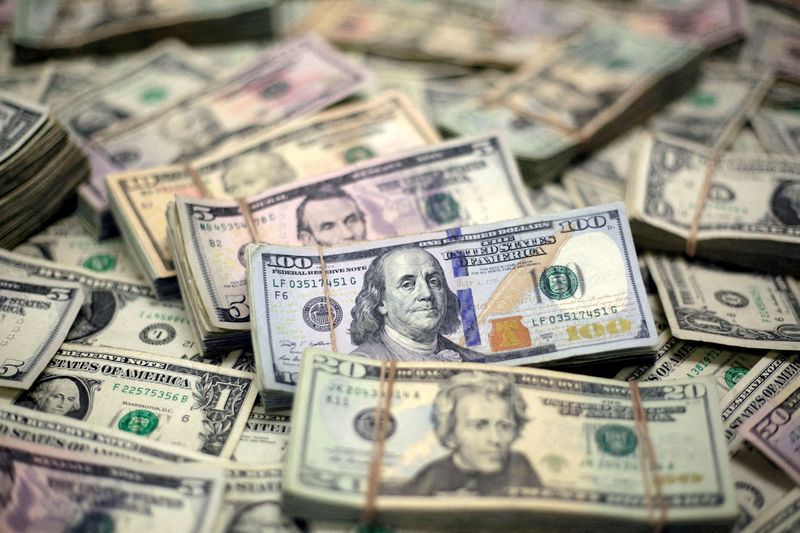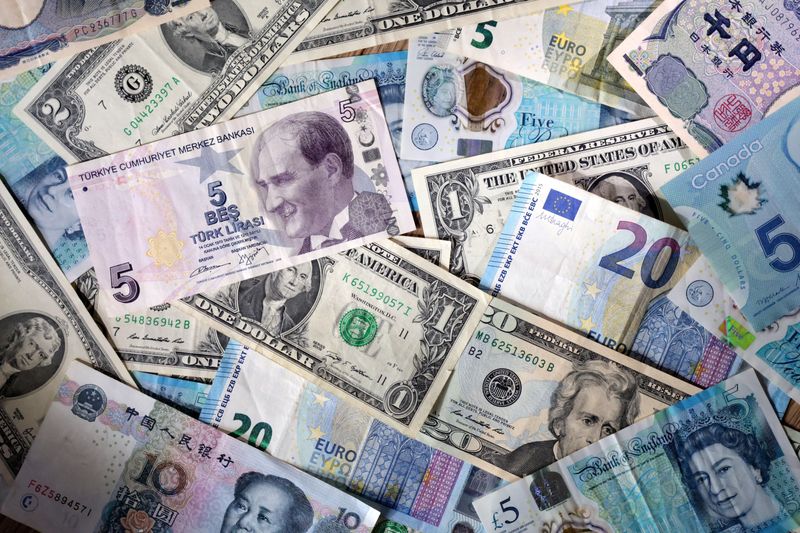Forex
Dollar slips as traders unwind Trump trades before election

By Karen Brettell, Medha Singh
NEW YORK (Reuters) -The U.S. dollar slipped on Monday as investors pulled out of Trump trades, which have benefited in recent weeks from speculation that Republican former President Donald Trump is more likely to win the presidential election on Tuesday against Democratic Vice President Kamala Harris.
“The Trump trade is unwinding,” said Karl Schamotta, chief market strategist at Corpay in Toronto. “We’ve seen a big pullback in the likelihood of a Republican sweep as implied by prediction markets and polling.”
Harris has gained in some polls though overall they show a tight race.
Harris has also experienced improving momentum on election gambling sites and has a slight lead on PredictIt, while Polymarket continues to show Trump as favorite.
Trump’s policies on tariffs and immigration are seen as likely stoking inflation, which would send longer-dated U.S. Treasury yields and the dollar higher.
At the same time, “tariffs and just sheer uncertainty is expected to harm the outlook for other currencies,” Schamotta said.
The currency market is likely to see bigger moves after the election if the party of the new president also controls Congress.
“A Red Wave (favoring Republicans) would kick-start a sizeable USD rally. It would rekindle memories of US Exceptionalism, anchored by tariffs, tax cuts, deregulation and negative impacts on the outlook for EZ and China,” analysts at TD Securities said in a note.
“A Blue Wave (favoring Democrats) is the worst outcome for the USD as markets unwind Trump trades and hedges. The second order effect is that a Blue Wave could start to undermine the USD, as the potential for higher taxes and more regulation starts to see US equities underperform the rest of world,” they added.
The was last down 0.05% at 103.89. The euro gained 0.41% to $1.0878. The greenback weakened 0.54% to 152.16 Japanese yen.
The one-week implied volatility options for euro/dollar were at the highest since March 2023.
The offshore also gained 0.42% to 7.11 per dollar per dollar while the Mexican peso strengthened 0.79% to 20.129.
These currencies had weakened in recent weeks on expectations they would be hurt by new tariffs under a Trump presidency.
Implied volatility for the yuan is at a record high, while that for dollar/Mexican peso is at the highest since April 2020.
also fell 2.08% to $67,758.
Trump is viewed by analysts as enacting more favorable policies for cryptocurrencies than Harris.
The Federal Reserve is expected to cut rates by 25 basis points at the conclusion of its two-day meeting on Thursday, and investors will focus on any clues that the U.S. central bank could skip a cut in December.
October’s jobs report showed that employers added far fewer jobs than economists had expected, which has raised questions over the degree of softness in the labor market.
Recent hurricanes and labor strikes were partially responsible for the weak report.
It came after much stronger than expected jobs gains in September, which led investors to price for fewer Fed rate cuts.
Traders are now pricing 82% odds that the Fed will also cut in December, according to the CME Group’s Fed Watch Tool.
The Bank of England meets on Thursday and is expected to cut by 25 basis points, while the Riksbank is seen easing by 50 basis points and the Norges Bank is expected to stay on hold.
The BoE’s decision has been complicated by a sharp selloff in gilts following the Labour government’s budget last week, which also dragged the pound lower.
The pound was last up 0.2% at $1.2952.

The Reserve Bank of Australia is expected to hold rates steady at its meeting on Tuesday.
The strengthened 0.43% to $0.6587.

 Forex3 years ago
Forex3 years agoForex Today: the dollar is gaining strength amid gloomy sentiment at the start of the Fed’s week

 Forex3 years ago
Forex3 years agoUnbiased review of Pocket Option broker

 Forex3 years ago
Forex3 years agoDollar to pound sterling exchange rate today: Pound plummeted to its lowest since 1985

 Forex3 years ago
Forex3 years agoHow is the Australian dollar doing today?

 Cryptocurrency3 years ago
Cryptocurrency3 years agoWhat happened in the crypto market – current events today

 World3 years ago
World3 years agoWhy are modern video games an art form?

 Commodities3 years ago
Commodities3 years agoCopper continues to fall in price on expectations of lower demand in China

 Economy3 years ago
Economy3 years agoCrude oil tankers double in price due to EU anti-Russian sanctions
























